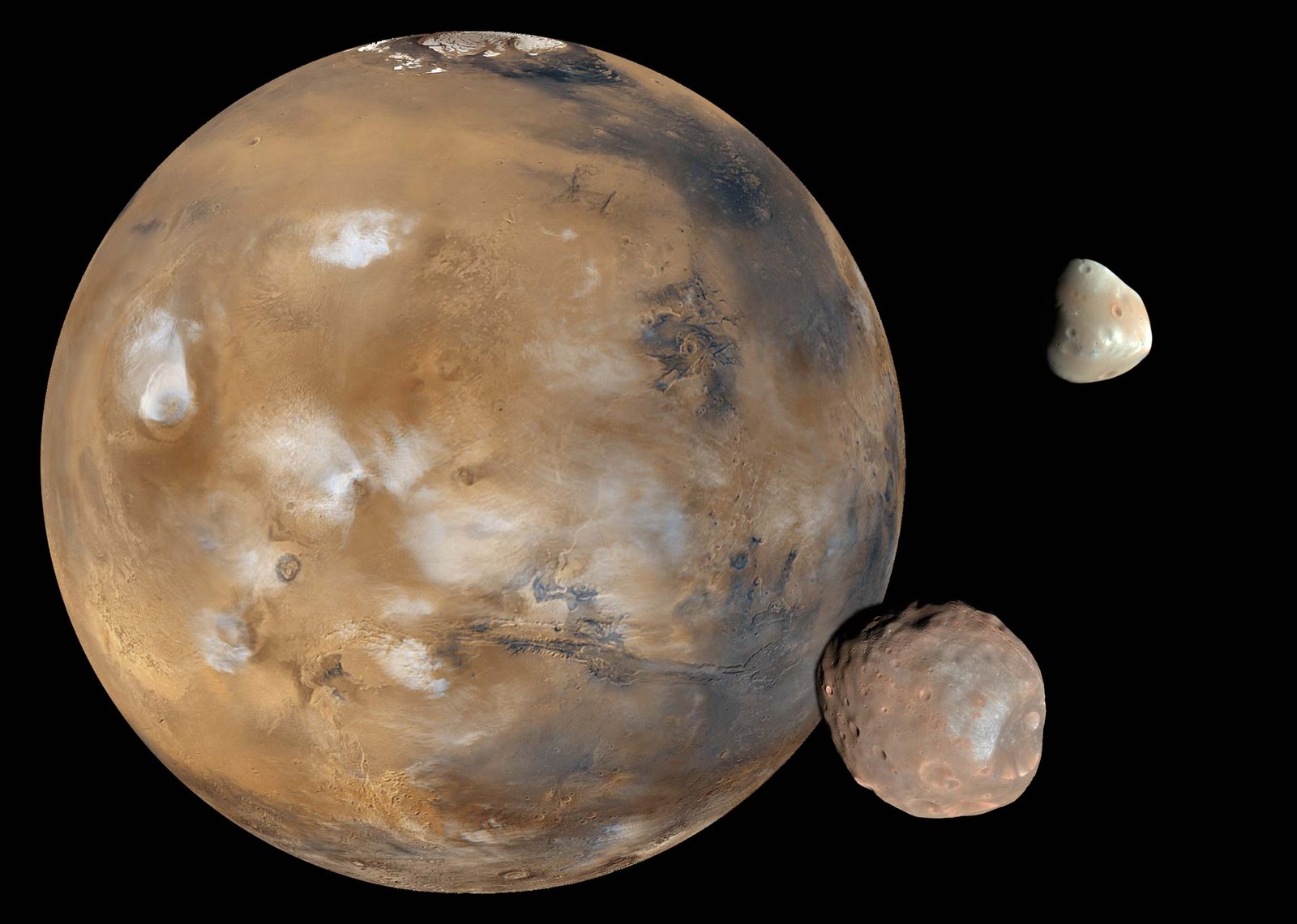MMX

In the MMX (Martian Moons eXploration) project, a Japanese space probe is being developed to explore the Martian moons Phobos and Deimos. In the process, soil samples are to be collected and brought back to Earth. Research and development are currently being undertaken.
Runtime: | 2019-01-01 to 2027-12-31 |
Acronym: | Martian Moons eXploration |
Projekt partners: | |
Fields of application: |
|
Funding: | DLR |
Project details
Mars has two small moons, Phobos and Deimos. These are the target of the Japanese Martian Moons eXploration (MMX) mission, which also involves international partners. Scheduled for launch in 2024. it will enter Mars orbit n 2025, and return samples to Earth in 2029. The spacecraft will carry a German-French rover that will land on either Phobos or Deimos and explore the surface in detail for several months. The scientists hope to gain new insights into the formation and evolution of the Solar System. At the International Paris Air Show in Le Bourget, the German Aerospace Center (Deutsches Zentrum für Luft- und Raumfahrt; DLR), the Japanese space agency JAXA and the French space agency CNES agreed to further collaborate on the world’s first exploration of a minor Solar System body with a rover.
The German-French rover will be designed and built as a joint effort. DLR will, in particular, be responsible for developing the rover’s casing and its robotic locomotion system, together with a spectrometer and a radiometer that will both be used to determine the characteristics and composition of the surface. The French space agency CNES is making major contributions with camera systems for spatial orientation and exploration of the surface, as well as the rover’s central service module. Upon landing, the rover will then be operated jointly by CNES and DLR.
The MMX mission follows in the footsteps of the successful predecessor mission Hayabusa2, which explored the asteroid Ryugu. As part of the mission, on 3 October 2018, the Mobile Asteroid and Surface Scout (MASCOT) lander ‘hopped’ across the asteroid’s surface and sent spectacular images of a landscape strewn with boulders, stones and almost no dust back to Earth. On that same day, JAXA, DLR and CNES signed a first memorandum of understanding for cooperation within the MMX mission.
DLR Robotic and Mechatronic Institute is mainly responsible for:
- Project Lead on DLR Side
- Development of the Locomotion Sub System (LSS)
- Development of the autonomous navigation functionalities. (DLR-NAV)



